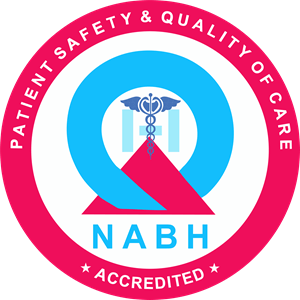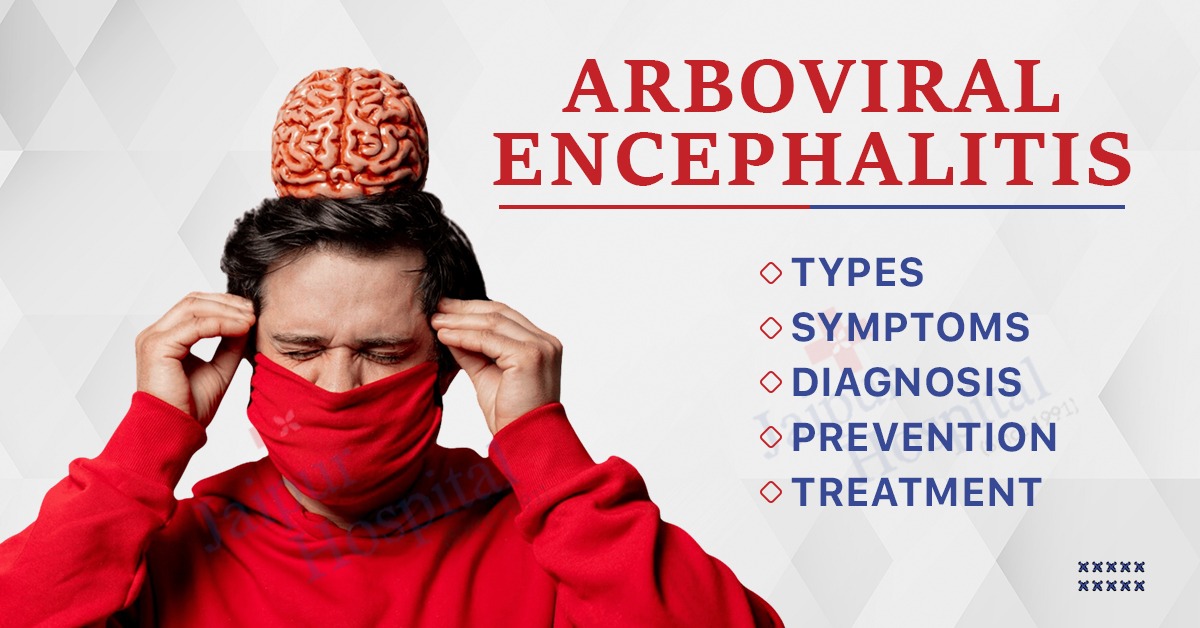What is Arboviral Encephalitis?
Arboviral encephalitis is a term used to describe a group of viral infections that can cause brain inflammation (encephalitis) and are transmitted to humans through the bites of infected arthropods, primarily mosquitoes and ticks. The term “arbovirus” stands for “arthropod-borne virus.”
Causes of Arboviral Encephalitis
Arboviral encephalitis is caused by a group of viruses known as arboviruses, primarily transmitted to humans through the bites of infected arthropods, such as mosquitoes and ticks. Here are the leading causes of arboviral encephalitis:
Mosquito-Borne Arboviruses: Several arboviruses are primarily transmitted by infected mosquitoes. These viruses are carried by mosquitoes and are transmitted to humans when the infected mosquito bites them. Examples of mosquito-borne arboviruses that can cause encephalitis include:
- West Nile Virus (WNV): A common mosquito-borne virus in many parts of the world.
- Eastern Equine Encephalitis Virus (EEEV): Primarily found in North America, especially in the eastern United States.
- Western Equine Encephalitis Virus (WEEV): Also found in North America but more prevalent in the western regions.
- St. Louis Encephalitis Virus (SLEV): Predominantly found in the United States.
Tick-Borne Arboviruses: Some arboviruses are transmitted by infected ticks. When an infected tick bites a human, it can transmit the virus. Examples of tick-borne arboviruses include:
- Tick-Borne Encephalitis Virus (TBEV): Found in parts of Europe and Asia.
- Powassan Virus: Found in North America and transmitted by ticks.
Other Arthropod Vectors: While mosquitoes and ticks are the most common arthropod vectors for arboviruses, other arthropods, such as sandflies and midges, can also transmit certain arboviruses, causing encephalitis in humans. For example, the Oropouche virus is transmitted by sandflies in South America.
Also read: Depression: Causes, Symptoms, Types, Risk Factors & Treatment
How is Arboviral Encephalitis Spread?
Arboviral encephalitis is spread through the bite of infected arthropods, primarily mosquitoes and ticks, that act as vectors for the viruses. Here’s how the transmission occurs:
Mosquito-Borne Arboviruses:
Mosquito Infection: The cycle typically begins when a female mosquito becomes infected with an arbovirus by feeding on the blood of an infected host, such as a bird, horse, or another infected vertebrate animal.
Virus Multiplication: The virus multiplies and reproduces within the mosquito’s body.
Transmission to Humans: Infected mosquitoes can then transmit the virus to humans when they bite to feed on blood. During the blood-feeding process, the mosquito injects the virus into the human host along with its saliva.
Human Infection: If the mosquito is carrying an arbovirus, the virus can infect the human host, potentially leading to arboviral encephalitis if the virus reaches the central nervous system and causes inflammation.
Tick-Borne Arboviruses:
Tick Attachment: Infected ticks, which have previously acquired the virus by feeding on infected vertebrate animals, attach themselves to humans when they bite.
Virus Transmission: During the feeding process, the tick can transmit the arbovirus to the human host. Unlike mosquitoes, ticks generally feed for longer periods, which can increase the risk of transmission.
Human Infection: If the tick is carrying an arbovirus, the virus can enter the human host’s bloodstream through the tick’s saliva, potentially leading to infection and, in some cases, arboviral encephalitis.
It’s important to note that not all mosquitoes or ticks carry arboviruses, and not all individuals who are bitten by infected vectors will develop encephalitis. The risk of infection and disease development depends on factors such as the specific arbovirus, the abundance of infected vectors in a given area, an individual’s immune system, and other environmental and host factors.
Also read: Why Your Feet Are Always Cold
Types of Arboviral Encephalitis
There are several types of arboviral encephalitis, each caused by a different arthropod-borne virus (arbovirus). These viruses are transmitted to humans primarily through the bites of infected mosquitoes or ticks. Here are some of the most notable types of arboviral encephalitis:
- West Nile Virus (WNV) Encephalitis: WNV is one of the most well-known arboviruses and can cause encephalitis in humans. It is transmitted primarily by infected mosquitoes. While many WNV infections result in mild or asymptomatic illness, severe cases can lead to encephalitis, which may have long-term neurological effects.
- Eastern Equine Encephalitis Virus (EEEV) Encephalitis: EEEV is a mosquito-borne virus found primarily in North America, especially in the eastern United States. EEEV can cause severe encephalitis in humans and has a high mortality rate, making it one of the most deadly arboviruses.
- Western Equine Encephalitis Virus (WEEV) Encephalitis: WEEV is another mosquito-borne virus found in North America, with a greater prevalence in the western regions. It can also lead to encephalitis in humans, although it is less common than WNV or EEEV infections.
- St. Louis Encephalitis Virus (SLEV) Encephalitis: SLEV is primarily found in the United States and is transmitted by infected mosquitoes. Infection with SLEV can lead to encephalitis in some individuals.
- Japanese Encephalitis Virus (JEV) Encephalitis: JEV is prevalent in parts of Asia and is transmitted by mosquitoes, primarily in rural and agricultural areas. It can lead to encephalitis and is a significant public health concern in affected regions.
- Tick-Borne Encephalitis (TBE) Encephalitis: TBE is transmitted by infected ticks and is found in parts of Europe and Asia. It can lead to encephalitis in humans and is associated with tick-infested wooded areas.
- Powassan Virus Encephalitis: Powassan virus is another tick-borne virus found in North America. It can cause encephalitis in humans and is of particular concern in regions with a high prevalence of infected ticks.
- Venezuelan Equine Encephalitis Virus (VEEV) Encephalitis: VEEV primarily affects horses but can also infect humans. It is found in parts of the Americas and is transmitted by mosquitoes.
- La Crosse Virus Encephalitis: La Crosse virus is primarily found in North America and is transmitted by infected mosquitoes, particularly the Aedes triseriatus mosquito. It can cause encephalitis, especially in children.
Symptoms of Arboviral Encephalitis
The symptoms of arboviral encephalitis can vary depending on the specific arbovirus causing the infection, the individual’s age, and their overall health. In some cases, infected individuals may remain asymptomatic or experience only mild symptoms, while others may develop severe neurological symptoms. Common symptoms of arboviral encephalitis include:
- Fever: Many cases of arboviral encephalitis begin with a sudden onset of fever, which can be high.
- Headache: Severe headaches are a common symptom and can be debilitating.
- Neurological Symptoms: Arboviral encephalitis primarily affects the central nervous system, leading to various neurological symptoms, which can include:
○ Altered Mental Status: This can range from confusion and disorientation to more severe symptoms like coma.
○ Seizures: Some individuals may experience seizures, which can be generalized or focal.
○ Stiff Neck: Stiffness in the neck and an inability to touch the chin to the chest (neck stiffness) can be a sign of meningeal irritation.
○ Muscle Weakness or Paralysis: Weakness or paralysis of muscles, particularly in the limbs, can occur.
○ Tremors or Jerking Movements: Involuntary muscle movements, such as tremors or jerking, may be observed.
○ Difficulty Speaking or Swallowing: Encephalitis can affect the ability to speak or swallow properly. - Sensory Disturbances: Some individuals may experience sensory disturbances, such as numbness, tingling, or loss of sensation in various parts of the body.
- Behavioral Changes: Arboviral encephalitis can lead to personality changes, irritability, and altered behavior.
- Hallucinations: Visual or auditory hallucinations can occur in some cases.
- Difficulty Walking or Coordination Problems: Impaired coordination and difficulty walking or maintaining balance can be a consequence of encephalitis
Prevention for Arboviral Encephalitis
Preventing arboviral encephalitis primarily involves measures to reduce exposure to the arthropod vectors (mosquitoes and ticks) that transmit these viruses. Here are important preventive measures to consider:
- Use Insect Repellent:
○ Apply an EPA-registered insect repellent on exposed skin and clothing, following the label instructions. Repellents containing DEET, picaridin, IR3535, or oil of lemon eucalyptus are effective against mosquitoes and ticks.
○ Reapply repellent as needed, especially if you’re outdoors for an extended period. - Wear Protective Clothing:
○ Wear long-sleeved shirts, long pants, socks, and shoes when spending time outdoors in areas where arboviruses are prevalent.
○ Tuck your pants into your socks to prevent ticks from crawling up your legs. - Avoid Peak Mosquito Activity:
○ Mosquitoes are most active during dawn and dusk. If possible, limit outdoor activities during these times.
○ Consider using mosquito nets or screens when sleeping outdoors or in areas with inadequate housing. - Reduce Mosquito Breeding Sites:
○ Eliminate standing water around your home where mosquitoes can breed. This includes emptying containers, cleaning clogged gutters, and keeping birdbaths and flowerpot saucers empty and clean.
○ Ensure that swimming pools are properly maintained and treated to prevent mosquito breeding. - Protect Pets:
○ Use veterinary-approved tick and flea prevention products on pets to protect them from tick-borne diseases.
○ Remove any ticks found on pets promptly. - Vaccination (if available):
○ In regions where vaccines are available for specific arboviruses (e.g., Japanese encephalitis), consider getting vaccinated if you are at high risk of exposure. - Travel Precautions:
○ If traveling to areas with a high risk of arboviral encephalitis, take extra precautions. Research the risk in the area you are visiting and follow local health recommendations.
○ Use mosquito nets and screens in accommodations that may not have adequate protection. - Stay Informed:
○ Stay informed about local health advisories and updates regarding arboviral diseases in your area.
○ Follow public health guidelines and recommendations, especially during outbreaks. - Protect Against Ticks:
○ When in areas with ticks, wear light-colored clothing to make it easier to spot ticks.
○ Perform thorough tick checks on your body and clothing after spending time outdoors in tick-prone areas.
○ If you find a tick attached to your skin, remove it carefully with fine-tipped tweezers and clean the bite area. - Community Efforts:
○ Support community efforts to control mosquito populations through insecticide spraying and environmental management.
○ Participate in community clean-up initiatives to reduce mosquito breeding sites.
Preventing arboviral encephalitis is important for both individual and public health. By taking these precautions, you can reduce your risk of infection and contribute to the prevention of these potentially serious and sometimes life-threatening diseases.
Treatment for Arboviral Encephalitis
Treatment for arboviral encephalitis primarily focuses on supportive care, as there is no specific antiviral medication available for most arboviruses. The management of arboviral encephalitis is aimed at alleviating symptoms, preventing complications, and providing appropriate medical care. Here are the key components of treatment:
- Hospitalization: Severe cases of arboviral encephalitis often require hospitalization. Patients with neurological symptoms, altered mental status, or seizures are typically admitted to a hospital for close monitoring and medical care.
- Supportive Care:
○ Intravenous Fluids: Patients may receive intravenous fluids to prevent dehydration and maintain electrolyte balance.
○ Medications: Analgesics (pain relievers) and antipyretics (fever reducers) may be given to alleviate pain and reduce fever.
○ Anti-seizure Medications: Seizures, a common symptom of encephalitis, may be treated with anti-seizure medications. - Neurological Support:
○ In severe cases, patients with encephalitis may require mechanical ventilation to assist with breathing.
○ Close neurological monitoring is essential to detect changes in mental status or neurological symptoms. - Antiviral Medications (in some cases):
○ While there is no specific antiviral treatment for most arboviruses, some specific antiviral drugs may be used in certain circumstances. For example, intravenous immunoglobulin (IVIG) has been used in some cases of West Nile virus (WNV) encephalitis.
○ The use of antiviral medications depends on the specific arbovirus and the patient’s clinical condition. It is not a standard treatment for all arboviral encephalitis cases. - Pain Management: Patients may experience severe headaches and other pain-related symptoms, which can be managed with appropriate pain medications.
- Anti-inflammatory Drugs: In some cases, corticosteroids may be used to reduce brain inflammation, although their effectiveness in treating arboviral encephalitis is debated.
- Management of Complications: Encephalitis can lead to various complications, such as respiratory distress, cardiac issues, and neurological deficits. These complications will be treated as they arise.
- Rehabilitation: After the acute phase of the illness, patients who have experienced neurological deficits may require rehabilitation services, such as physical therapy, occupational therapy, and speech therapy, to regain lost functions.


